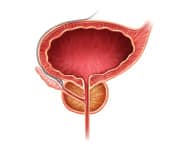Life Extension Magazine®
Increased Mortality Risk Associated with Inflammation-Promoting Diet
An article published in the American Journal of Clinical Nutrition reports an association between a higher Dietary Inflammatory Index score and an increased risk of mortality from cardiovascular disease and cancer over a median of 12.4 years.*
The investigation included 8,089 men and women enrolled in a study that compared the effects of a placebo to low-dose supplementation with vitamins C and E, beta-carotene, selenium, and zinc from 1994 to 2002. Participants’ dietary records were utilized to calculate each subject’s Dietary Inflammatory Index score.
Participants whose dietary inflammation scores were among the top one-third of subjects had a risk of dying from cancer or cardiovascular disease that was 53% higher than those whose scores were among the lowest third. For cancer alone, the risk of death was 83% greater in the highest Dietary Inflammatory Index group.
Subjects in the placebo group whose Dietary Inflammatory Index scores were among the top third had over twice the risk of death from all causes over follow-up compared to those whose scores were among the lowest third. However, this effect was not observed among those who received the vitamin and mineral supplements.
*Am J Clin Nutr. 2016 Feb 10.
Omega-3 Associated with Improved Memory Function in Older Adults
 |
Results of a study published in the Journal of Alzheimer’s Disease indicate better object location recall among older men and women who supplemented with omega-3 fatty acids.*
The study utilized data from a previously reported double-blind trial involving healthy men and women between the ages of 50 and 80 years who received 2,200 mg per day of omega-3 fatty acids or a placebo daily for 26 weeks. The 44 subjects included in the current investigation received tests that assessed object location memory before and after the treatment period.
At the end of the study, red blood cell membrane proportions of omega-3 fatty acids were significantly higher in the treatment group compared with those who received a placebo. While object location recall performance at the beginning of the study was comparable, omega-3 supplemented participants experienced an average improvement of 13.2% versus 3.5% in the placebo group.
Editor’s Note: As possible mechanisms involved in support of the study’s findings, authors Nadine Külzow and her associates note the beneficial effects for omega-3 on nerve cell membranes, new synapse formation, and synaptic transmissions that modulate the function and expression of receptors involved in memory and learning.
*J Alz Dis. 2016 Feb 10.
High Coffee Intake Associated with Lower MS Risk
 |
An article in the Journal of Neurology Neurosurgery & Psychiatry reports an association between increased coffee drinking and a lower risk of developing multiple sclerosis (MS).*
Subjects in the current investigation were derived from a study in Sweden in which 1,620 patients with multiple sclerosis were matched for age and other factors with 2,788 control subjects, and a study in the US that matched 1,159 multiple sclerosis patients with 1,172 controls. Participants were questioned concerning their history of coffee drinking over the years, including quantity consumed.
Those who consumed approximately six cups of coffee per day had a 30% lower risk of multiple sclerosis compared to no intake in the Swedish study and a 31% lower risk in the US study.
“The results of these thorough analyses add to the growing evidence for the beneficial health effects of coffee,” conclude Elaine Kingwell and José Maria Andreas Wijnands in an accompanying editorial.
Editor’s Note: “By upregulating adenosine A1 receptors, consumption of caffeine attenuates neuroinflammation and demyelination in animal models of multiple sclerosis,” authors A. K. Hedström and colleagues note. They add: “Further studies are required to establish if it is in fact caffeine, or if there is another molecule in coffee underlying the findings, to longitudinally assess the association between consumption of coffee and disease activity in multiple sclerosis, and to evaluate the mechanisms by which coffee may be acting, which could thus lead to new therapeutic targets.”
*J Neurol Neurosurg Psychiatry. 2016 Mar 3.
Metformin Lowers Mortality Risk in Diabetic Women with Cervical Cancer
 |
An article published in Cancer Epidemiology, Biomarkers & Prevention reports an association between the use of metformin and a lower risk of mortality from cervical cancer among women diagnosed with the disease.*
Kathy Han of Princess Margaret Cancer Centre and her Toronto colleagues utilized health care databases to identify 181 diabetic women aged 66 and older who were diagnosed with cervical cancer from 1997 to 2010. Cumulative metformin dose following diagnosis was calculated by multiplying dose and quantity of tablets dispensed with each prescription until the last follow-up date.
Over a 3.9-year median, a total of 129 deaths occurred, among which 61 were attributed to cervical cancer. Dr. Han’s team uncovered a 21.4% lower risk of dying from cervical cancer and a 5% lower risk of all-cause mortality in association with each additional 365 grams of cumulative metformin use.
Editor’s Note: As potential mechanisms, the authors note that metformin has been found to impact signaling pathways involved in cervical cancer growth, sensitize cancer cells to radiotherapy and decrease tumor hypoxia (low oxygen levels).
*Cancer Epidemiol Biomark Prev . 2015 Dec 31.
Green Tea Extract Associated with Decreased Liver Enzymes
 |
Results of a randomized trial reported in the February 1, 2016, edition of the International Journal of Preventive Medicine reveal a reduction in liver enzymes among patients with nonalcoholic fatty liver disease (NAFLD) given a green tea extract supplement.*
The trial included 80 men and women with elevations of the liver enzymes alanine aminotransferase (ALT) and aspartate aminotransferase (AST) and ultrasonography diagnosed NAFLD who received 500 mg of green tea extract or a placebo for 90 days. Weight, ALT, AST, and alkaline phosphatase levels were measured at the beginning of the study and at 12 weeks.
Among those who received the green tea extract, ALT and AST were significantly lowered compared with levels measured at the beginning of the study, while nonsignificant reductions occurred in the placebo group.
Editor’s Note: In their discussion of the findings, the authors remark that epigallocatechin gallate (EGCG), one of the main catechins in green tea, is believed to reduce oxidative stress in the liver that can contribute to NAFLD. Other research has shown that catechins increase liver lipid metabolism.
*Int J Prev Med . 2016 Feb 1;7:28.
Cancer Risk Significantly Lower When Vitamin D Levels Hit 40 ng/mL
 |
A pooled analysis published in PLOS ONE found an association between higher vitamin D levels and a substantial reduction in invasive cancers.*
Robert P. Heaney and colleagues at UC San Diego pooled data from the Lappe cohort, which included 1,169 women who participated in a randomized trial and the GrassrootsHealth cohort, a prospective study cohort that included 1,135 women.
Lappe cohort subjects had median 25-hydroxyvitamin D levels of 30 ng/mL while those in the GrassrootsHealth cohort had a median of 48 ng/mL.
The researchers determined that a vitamin D level of 40 ng/mL or more was associated with a 67% lower risk of developing cancer over a 3.9 year median compared to levels of 20 ng/mL or less. The finding suggests that the target vitamin D level of 20 ng/mL recommended by the Institute of Medicine in 2010 may be insufficient to provide significant cancer protection.
Editor’s Note: “We have quantitated [determined] the ability of adequate amounts of vitamin D to prevent all types of invasive cancer combined, which had been terra incognita until publication of this paper,” commented coauthor Cedric Garland, DrPH, who is an adjunct professor at the University of California San Diego School of Medicine Department of Family Medicine and Public Health. “These findings support an inverse association between 25(OH)D and risk of cancer and highlight the importance for cancer prevention of achieving a vitamin D blood serum concentration above 20 ng/mL, the concentration recommended by the IOM for bone health.”
*PLOS ONE. 2016 Apr 6.
Fewer Hospital Readmissions among Men Treated with Testosterone
 |
A study reported in Mayo Clinic Proceedings uncovered a lower rate of hospital readmission among men who received testosterone replacement compared to untreated men.*
Previous research has found a decrease in muscle mass and strength in association with hospitalization among older men that is linked to an increased risk of readmission. Testosterone is an androgenic hormone that helps maintain muscle mass, among other benefits.
Jacques Baillargeon and colleagues analyzed SEER-Medicare linked data for 6,372 men aged 66 and older with low testosterone levels who were hospitalized from 2007 to 2012. They found that men who were being treated with testosterone had a 9.8% readmission rate within 30 days of being admitted, compared to 13% among men who were not being treated with the hormone. When emergency department admissions were evaluated, 10% of those who did not use testosterone were readmitted within a month, compared to 6.2% of users.
Editor’s Note: “It is possible that our findings of decreased hospitalization among male Medicare beneficiaries who received testosterone therapy reflect the improved health, strength and exercise capacity seen in previous studies,” commented Dr. Baillargeon, who is a professor of epidemiology in the department of preventative medicine and community health at the University of Texas Medical Branch.
*Mayo Clin Proc. 2016 Apr 13.
Higher Serum Magnesium Levels Linked with Decreased Artery Calcification
 |
Research published in Nutrition Journal found a lower risk of coronary artery calcification among men and women with higher levels of serum magnesium.*
More than 1,200 participants were involved in the Genetics of Atherosclerotic Disease study, which included Mexican men and women between the ages of 30 and 75 years. Subjects included in the current investigation were limited to those without cardiovascular disease or family history of premature coronary heart disease. Blood sample analysis provided data concerning serum magnesium and other values, and computed tomography examination assessed coronary artery calcium (CAC).
The findings showed that 13% of the women and 41.5% of the male participants had coronary artery calcium scores greater than zero. Among subjects whose serum magnesium levels were among the top 25% of participants, the adjusted risk of having a CAC score greater than zero was 42% lower than those whose magnesium levels were among the lowest 25%.
Editor’s Note: Additionally, the risk of high blood pressure was 48% lower and the risk of type II diabetes was 69% lower for those in the highest magnesium group. Each 0.17 mg/dL increment in serum magnesium was found to be associated with a 16% lower risk of the presence of coronary artery calcification.
*Nutr J. 2016 Mar 1.
Aspirin Predicted to Improve Cancer Survival by up to 20%
 |
Adding aspirin to their treatments could improve cancer patients’ chances of surviving the disease by as much as 20%, according to a new review.*
Peter Elwood and colleagues evaluated five randomized trials and 42 observational studies. Subjects consumed low-dose aspirin in addition to their treatments and were followed for an average of five years. “Our review, based on the available evidence, suggests that low-dose aspirin taken by patients with bowel, breast or prostate cancer, in addition to other treatments, is associated with a reduction in deaths of about 15%- 20%, together with a reduction in the spread of the cancer,” he reported. “One of the concerns about taking aspirin remains the potential for intestinal bleeding,” Dr. Elwood noted. “That’s why we specifically looked at the available evidence of bleeding and we wrote to all authors asking for further data. In no study was serious or life-threatening bleeding reported.”
Editor’s Note: “While there is a desperate need for more detailed research to verify our review and to obtain evidence on less common cancers, we’d urge patients diagnosed with cancer to speak to their doctor about our findings so they can make an informed decision as to whether or not they should take a low-dose aspirin as part of their cancer treatment,” Dr. Elwood recommended.
Higher Zinc Levels Linked with Less Inflammation in Men and Women Treated for HIV
 |
Biological Trace Element Research reported a study conducted at the University of Massachusetts Amherst which found an association between higher zinc concentrations and reduced inflammation as indicated by lower C-reactive protein (CRP) levels in HIV-positive men and women treated with antiretroviral therapy.*
The study included 177 men and 134 women aged 18 to 60 years enrolled in the Positive Living with HIV Study in Kathmandu, Nepal. Blood samples were analyzed for CRP and zinc.
Average CRP levels declined in association with rising zinc concentrations. Those whose CRP levels were among the top one-third of subjects had zinc levels that were 44.2% lower than those whose CRP levels were among the lowest third. Among men whose zinc levels were highest, CRP levels were 30% lower than those whose levels were among the lowest third, and for women, CRP levels were 35.9% lower.
Editor’s Note: The authors recommend further research to determine whether zinc supplementation could help reduce inflammation in individuals treated for HIV.
*Biol Trace Elem Res. 2016 May;171(1):63-70.
Critical Flaw in Government-Funded Study
 |
A letter published in the New England Journal of Medicine exposed a critical flaw in a study that erroneously caused many men to stop annual PSA screening.*
It turned out that in a huge government-funded trial, both study groups were having their blood tested for PSA. In other words, the number of men counted as having PSA tests was about the same as those not counted as having PSA testing.
The initial reaction to the flawed findings in 2012 was that PSA screening had no value since there was little difference in prostate cancer mortality between the two groups.
Based on this new review of the original study data showing both groups were having PSA tests, our expectation is that a formal announcement will be made for men to resume annual PSA screening. According to lead author Jonathan Shoag: “We demonstrate that the PLCO study did not compare a group of men who received PSA screening to a group of men who were not screened, but compared men who were screened to other men who were screened, and we should therefore reconsider any decisions based on the study.”
Editor’s Note: “We expect this article to have a profound impact on the debate over the value of PSA screening,” coauthor Jim C. Hu, MD, MPH, predicted. “While there are risks of over-diagnosis and over-treatment associated with PSA testing, it can play an important role in preventing prostate cancer deaths as part of a personalized approach to cancer screening.”
*N Engl J Med. 2016 May 5;374:1795-1796.

